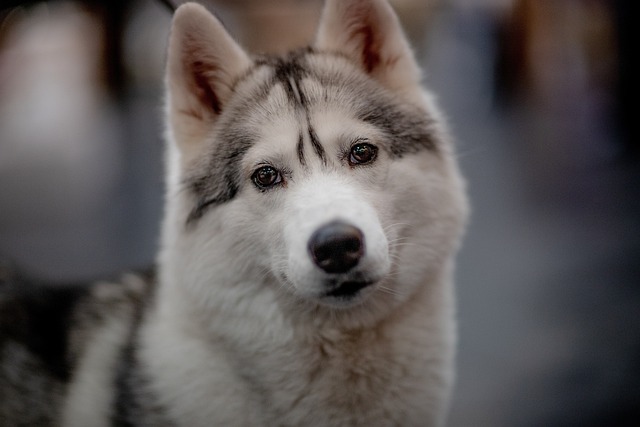
What is glaucoma in a dog?
You might notice your dog squinting more at mealtime or avoiding bright sunlight—these small changes could be early signs of a serious eye condition.
Dogs are the most loyal companions of human beings. They bring us endless joy and companionship. However, dogs are also prone to various health problems, among which periodontal disease is quite common in dogs but often overlooked by their owners. Understanding the symptoms of periodontal disease in dogs is crucial for timely detection, treatment of the disease, and safeguarding the health of our furry friends.
When a dog has periodontal disease, the first noticeable symptom is usually bad breath. Imagine when you are having an affectionate interaction with your dog, and you smell a pungent odor. This is likely a sign that your dog has periodontal disease. This kind of bad breath is different from ordinary oral odor. It is caused by the growth of bacteria in the mouth, the fermentation of food residues, and gum inflammation, among other factors. That unpleasant smell is like an alarm, reminding the owner that there is a problem with the dog's oral health.
Upon careful observation of the dog's mouth, obvious changes in the gums can be found. The gums of a healthy dog should be light pink and have a firm texture. But if a dog has periodontal disease, the gums will become red and swollen, and they may even bleed when gently touched. The redness and swelling of the gums are the body's response to fight inflammation. The presence of inflammation means that bacteria have multiplied in large numbers in the dog's mouth, disrupting the normal oral ecological environment. Seeing the dog's originally healthy gums turn red and swollen, as an owner, you will surely feel distressed and worried.

Tartar on the dog's teeth is also an important sign of periodontal disease. Over time, food residues, bacteria, and minerals in saliva will gradually accumulate on the tooth surface, forming tartar. Tartar is usually yellow or brown in color and has a hard texture, adhering tightly to the teeth. Tartar not only affects the appearance of the teeth but, more importantly, it will continuously irritate the gums, further exacerbating periodontal inflammation, just like adding fuel to the "fire" in the mouth.
If the periodontal disease progresses further, the dog's teeth will become loose. Tooth looseness is a signal that periodontal disease has entered a severe stage, indicating that the periodontal tissues have been severely damaged and can no longer provide sufficient support for the teeth. The originally sturdy teeth start to wobble, and the dog will feel pain when eating. It may reduce its food intake as a result, and its body will gradually lose weight. How can an owner not be anxious when seeing the dog's decreased appetite due to dental problems?
In terms of behavior, dogs will also show some abnormal signs. For example, it may resist you touching its mouth. When you try to check its mouth or brush its teeth, it will show signs of restlessness, anxiety, or even aggression. This is because its mouth is in pain, and any external touch will make it feel uncomfortable. In addition, the dog may drool more frequently than usual. This is because the inflammation in the mouth stimulates the salivary glands, leading to an increased secretion of saliva.
When a dog has periodontal disease, not only does it have to endure the pain itself, but it can also have an impact on its overall health. Bacteria can enter other organs of the body through the bloodstream, triggering serious diseases such as heart disease and kidney disease. Therefore, when you notice signs of periodontal disease in your dog, it is essential to take it to the veterinarian in a timely manner. The veterinarian will formulate an appropriate treatment plan according to the dog's specific condition, which may include teeth cleaning, oral hygiene, and medication.
As dog owners, we have the responsibility to pay attention to their health, regularly check their mouths, and achieve early detection and early treatment. In daily life, we should also pay attention to providing our dogs with a healthy diet. Choose dog food that is suitable for them and avoid feeding too much human food, especially those that are high in sugar and fat. At the same time, we should develop the good habit of brushing our dogs' teeth. Just as we brush our teeth every day to keep our mouths clean, dogs also need our help to maintain their oral health. Only in this way can our dogs stay healthy and happy by our side all the time and spend wonderful moments with us.

You might notice your dog squinting more at mealtime or avoiding bright sunlight—these small changes could be early signs of a serious eye condition.

Let’s set the scene: It’s a sweltering Phoenix afternoon—105°F outside—and you rushed your 2-year-old Lab mix, Cooper, on a quick walk to “get it over with.”

Let’s get real: You’re in your Miami apartment, watching your 3-year-old Corgi, Loki, struggle to climb the stairs to your second-floor unit.

Many dog owners brush off occasional scratching as just “dog behavior,” but persistent itching often signals something more—like a food allergy.

You might first notice your dog scratching more than usual—chewing at their paws until the fur looks thin, or rubbing their face against the couch nonstop.

Let’s be real: You’re standing in your Chicago apartment, watching your 3-year-old Beagle, Max, huff and puff just to climb onto the couch.